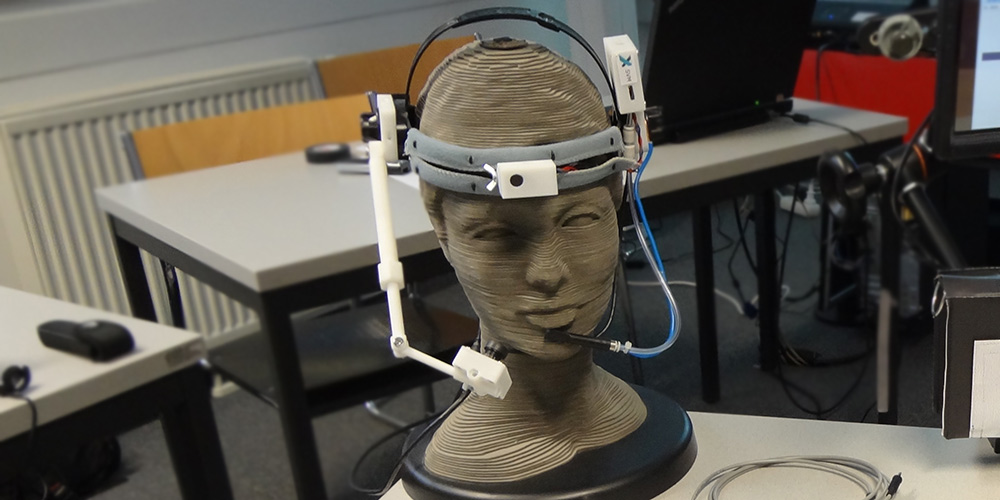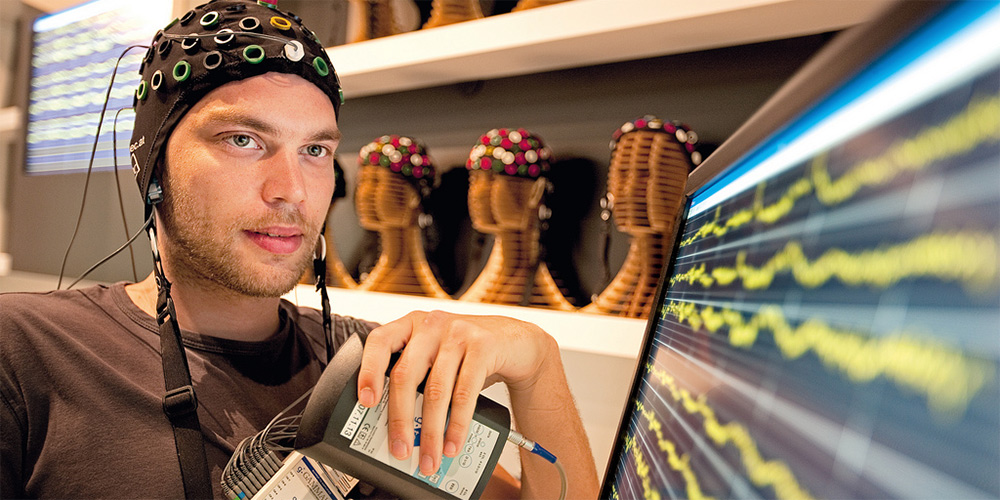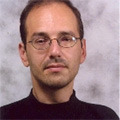
It don’t need to be expensive: AsTeRICS is an open source tool kit for “assistive technologies”.
Speaking, writing, hearing, reading—many of us can consider ourselves fortunate that we don’t have to do without these modes of communication that people take for granted, or that we don’t have to deal with limitations in doing so. According to UN estimates, approximately 15% of the world’s population—about a billion people—live with a disability. Whether it’s congenital or the result of an illness or injury, it is often accompanied by some degree of diminishment of a person’s ability to communicate with others. Technical aids—so-called assistive technologies—are designed first and foremost to help people with disabilities to stay connected to Digital Society and thus to compensate for their limitations in certain areas. Independence, taking part in social life, keeping in contact with friends and family—these are some of the wishes that technology can make come true, at least partially.
In this interview, Gerhard Nussbaum of the Linzer Kompetenznetzwerk Informationstechnologie zur Förderung der Integration von Menschen mit Behinderungen (KI-I, Linz Skills Network for Information Technology to Foster Integration of People with Disabilities) provides an introductory overview of assistive technologies. During “Science Days: Anatomy for All” at the Ars Electronica Center Linz on Saturday & Sunday, June 28-29, 2014, he and other experts in various medical fields will discuss this subject and pilot a quadcopter via a mouth-controlled interface.
What are the primary input/output devices being used in 2014?
Gerhard Nussbaum: There haven’t been a lot of changes recently in the basic technology of the input & output devices. People with physical handicaps primarily use alternative pointing devices and keyboards. The pointing devices include special joysticks and trackballs, the suck-blow mouse, and head & eye trackers; then there are special keyboards in a wide variety of sizes as well as virtual keyboards; and there’s also the brain-computer interface. People with visual impairments use such things as enlargement software, Braille displays and speech output equipment.

A quadrocopter is controlled via a mouth-controlled interface.
What are the essential limitations of these technologies?
Gerhard Nussbaum: Actually, at this point, practically all people with disabilities can be provided with technologies that enable them to operate a computer. However, there are many users who are also dependent on barrier-free software and barrier-free internet and, under certain circumstances, assistive technologies are no help in overcoming barriers of this kind.
What’s the story with financing assistive technologies like these? Are financial subsidies available in Austria?
Gerhard Nussbaum: Yes and no. There’s no legal entitlement; nevertheless, if assistive technologies are necessary for work and education, they are, as a rule, financed by the Federal Social Welfare Office. Some provinces also subsidize aids that users need at home. In this respect, Austria is way behind other countries.

The Brain Computer Interface is part of the exhibition “New Views of Humankind” at the Ars Electronica Center.
The brain-computer interface at the Ars Electronica Center is an attempt to receive the brain’s communication commands directly via an EEG. What innovations can we expect to see in the near future in the field of assistive technologies?
Gerhard Nussbaum: Keep in mind that the brain-computer interface originally emerged in this area too to help people with locked-in syndrome, who are aware and awake but can’t move or communicate verbally due to complete paralysis of nearly all voluntary muscles in the body, by enabling them to communicate by means of a computer. One possibility researchers have developed entails interfaces of this kind. In fact, there are already commercial systems on the market that can be used by people with disabilities. Most of these involve a so-called speller, a sort of virtual keyboard that can be used for text entry. But R&D engineers are also investigating other possibilities for human-computer interaction via brain-computer interfaces—for example, ways to control a mouse cursor.
One of the 2014 Prix Ars Electronica Golden Nica winners is a project entitled BlindMaps that provides an interface to enable visually impaired people to get around better in big cities. What kinds of interfaces are at the top of your wish list?
Gerhard Nussbaum: It would be great if all software and all websites including services were barrier-free. That alone would open up new worlds for a lot of people! And let’s not forget about consumer electronics (TVs, players, stereo systems, cell phones, etc.) and automated infrastructure like ticket vending machines and ATMs. Cooler, more user-friendly new interfaces are constantly being developed, but hardly any consideration is given to setting them up with barrier-free design. People with disabilities often have a hard time finding the kinds of devices they can use. It would be highly desirable if currently existing as well as future interfaces were made barrier-free.

The interface Blindmaps by Markus Schmeiduch, Andrew Spitz and Ruben van der Vleuten was awarded with a Golden Nica in the category “[the next idea] voestalpine Art and Technology Grant”.
Can you recommend a few links for additional information on this subject?
Gerhard Nussbaum: If you’re looking for info about technical aids, then the big databases are the first place to go. A good source is a German site named Rehadat (www.rehadat.de). There’s a lot happening now in the R&D area, and there are two major European conferences bringing together specialists in this field—the International Conference on Computers Helping People with Special Needs (ICCHP, www.icchp.org), and the conference of the Association for the Advancement of Assistive Technology in Europe (AAATE, www.aaate.net). The IKTForum in Linz on July 1-2, 2014 (www.iktforum.at) will also feature many interesting speeches on this topic.

Gerhard Nussbaum is deputy CEO and technical director of KI-I. He majored in computer science at the University of Linz, from which he graduated cum laude in 2003. He has delivered speeches at a wide array of conferences in Austria and abroad (e.g. ICCHP, ICOST, uDay, Mensch und Computer) and been a staff member on more than 15 projects having to do with technologies for people with disabilities, accessibility and usability of modern information technology, as well as e-Government in Austria and abroad and in association with partners in the public and private sectors. His current research focuses primarily on information & communication technologies (ICT) that enable or facilitate the integration of people with disabilities. These include assistive technologies and ICT for people with disabilities, accessibility and usability of current information technology and the internet, e-Accessibility and design-for-all. He has particular expertise in the fields of intelligent living, interior environmental control, and Web & software accessibility.
